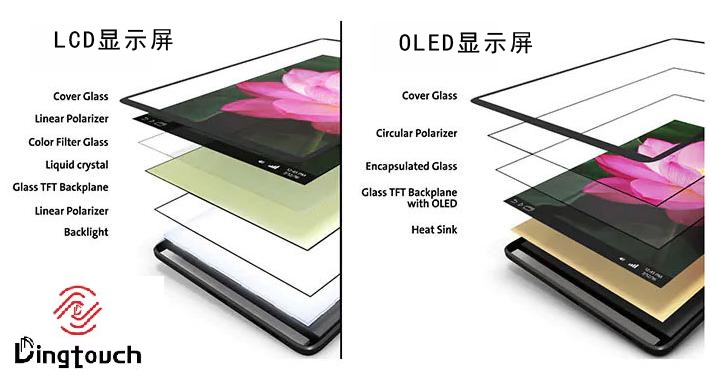News
which screen is better lcd or led?
which screen is better lcd or led?
Content Menu
● Understanding LCD and LED Technologies
● Key Differences Between LCD and LED
>> 1. What's the difference between LED and LCD display?
>> 2. Which type of display lasts longer—LED or LCD?
>> 3. Which type of display has better picture quality?
>> 4. Is LED or LCD better for gaming?
>> 5. Are there any disadvantages to using LED display?
When it comes to choosing a display technology for televisions, computer monitors, or other screen-based devices, the debate between LCD (Liquid Crystal Display) and LED (Light Emitting Diode) screens is prevalent. Both technologies have their unique advantages and disadvantages, making them suitable for different applications and user preferences. This article will explore the differences between LCD and LED screen, their respective benefits, and help you make an informed decision based on your needs.
Understanding LCD and LED Technologies
LCD Technology
LCD screens utilize liquid crystals to manipulate light and produce images. They require a backlight to illuminate the display, traditionally using cold cathode fluorescent lamps (CCFLs). The liquid crystals do not emit light on their own; instead, they control the passage of light from the backlight to create images.
LED Technology
LED screens are essentially a type of LCD display that uses LEDs for backlighting instead of CCFLs. This advancement allows for better brightness control, energy efficiency, and improved color accuracy. LED technology can be further categorized into two main types: edge-lit and direct-lit. Edge-lit LEDs are positioned around the edges of the screen, while direct-lit LEDs are placed behind the entire panel.
Key Differences Between LCD and LED

Advantages of LED Screen
1. Superior Picture Quality: LED display typically offer better picture quality than traditional LCD due to their higher brightness levels and better contrast ratios. They can produce deeper blacks and brighter whites, enhancing the overall viewing experience.
2. Energy Efficiency: LED screen consume less power than LCD because they can turn off individual diodes in darker areas of the screen. This results in lower electricity bills over time.
3. Longer Lifespan: The lifespan of LED displays is generally longer than that of LCD, often lasting between 50,000 to 100,000 hours compared to 30,000 to 60,000 hours for LCD.
4. Thinner Design: LED technology allows for thinner and lighter displays, making them more suitable for modern aesthetics and space-saving installations.
5. Wider Viewing Angles: Many LED screen provide wider viewing angles compared to traditional LCD, ensuring consistent picture quality from various perspectives.
Advantages of LCD Screen
1. Cost-Effective: LCD screen are often more affordable than their LED counterparts, making them a good choice for budget-conscious consumers.
2. Good Color Reproduction: While not as vibrant as LEDs, high-quality LCD can still provide excellent color reproduction suitable for many applications.
3. Less Eye Strain: Some users find that traditional LCD screen emit less blue light compared to certain LED models, potentially reducing eye strain during prolonged use.
4. Uniform Backlighting: Older models of LCD screen typically provide more uniform backlighting across the entire screen compared to edge-lit LED.
Applications
- LED Screen: Ideal for outdoor displays such as billboards and signage due to their high brightness and visibility in direct sunlight. They are also preferred for gaming and multimedia applications where picture quality is paramount.
- LCD Screen: Suitable for indoor environments where high resolution is required but extreme brightness is not necessary. They excel in applications like office workstations or home entertainment systems where cost-effectiveness is important.
Technological Innovations
The display technology landscape has evolved significantly over recent years with advancements that enhance both LCD and LED technologies:
1. Quantum Dot Technology: This innovation allows for better color accuracy and brightness in both LCD and LED display by using tiny semiconductor particles that emit specific colors when illuminated by a light source.
2. Mini-LED Technology: Mini-LED backlighting improves local dimming capabilities by using thousands of tiny LEDs instead of traditional backlighting methods. This results in better contrast ratios and deeper blacks while maintaining high brightness levels.
3. High Dynamic Range (HDR): HDR technology enhances the contrast ratio and color range of displays by allowing them to show more detail in both dark and bright scenes. This feature is increasingly available in both LED and advanced LCD displays.
4. Flexible Display: Innovations in flexible display technology allow screens to be curved or shaped according to user preferences or space constraints, providing new opportunities for design in consumer electronics.
5. Energy Efficiency Improvements: Both technologies are becoming more energy-efficient due to advancements in materials and manufacturing processes that reduce power consumption without sacrificing performance.
Conclusion
In summary, both LCD and LED technologies have their strengths and weaknesses. If you prioritize superior picture quality, energy efficiency, and a longer lifespan, then LED display are generally the better choice. However, if you are looking for a more budget-friendly option that still provides good performance for everyday use, an LCD may suffice.
Ultimately, your choice will depend on your specific needs—whether you need a display for gaming, professional work requiring high resolution and color accuracy, or general viewing purposes at home or in an office setting.
Frequently Asked Questions
1. What's the difference between LED and LCD display?
LED stands for Light Emitting Diode while LCD stands for Liquid Crystal Display. The primary difference lies in the backlighting technology; LED use diodes while traditional LCD use fluorescent lamps.
2. Which type of display lasts longer—LED or LCD?
LED display generally have a longer lifespan of approximately 50,000 to 100,000 hours compared to 30,000 to 60,000 hours for traditional LCD displays.
3. Which type of display has better picture quality?
LED display typically offer superior picture quality due to higher brightness levels and better contrast ratios compared to standard LCDs.
4. Is LED or LCD better for gaming?
LED display are often preferred for gaming because they provide faster response times and better color accuracy which enhances the gaming experience.
5. Are there any disadvantages to using LED display?
While LED display offer many advantages, they tend to be more expensive upfront compared to traditional LCD; however, they may save money in energy costs over time due to their efficiency.
By understanding these differences and considerations between LCD and LED technologies, you can make an informed decision that best suits your needs in selecting a display technology that meets your requirements effectively.
DINGTouch: Committed to continuous innovation and improvement of product quality to meet customers' high requirements and expectations.
DINGTouch is a manufacturer that provides high quality touch screen panels. Focus on the design, manufacturing and sales of touch screen panels, and are committed to providing customized solutions that satisfy customers.
DINGTouch: In the process of customizing touch screen panels, we focus on close cooperation and communication with customers. Understanding customers' needs and providing customized solutions will meet customers' individual needs. The company's products are favored by customers for their high quality and reliability, and provide them with the best touchscreen panel solutions.
At DINGTOUCH, we are the world's leading touchscreen manufacturer, helping businesses around the world take advantage of this exciting technology. For more information, please visit the home page now.
Find the DINGTouch technical team to achieve the success of your company's new project.
How to choose touch screen customization?
DINGTouch is a company specializing in the R&D and production of touch screen technology, headquartered in Shenzhen, China. As a professional touch screen supplier, DINGTouch is committed to providing high-quality, stable and reliable touch screen products to meet the diverse needs of customers. We continue to carry out technological innovation and product optimization to ensure that its touch screen products have good sensitivity, accuracy and durability.
In addition to the products themselves, we also focus on cooperation and communication with customers, and are committed to providing customized solutions and excellent after-sales services. Through continuous efforts to improve product quality and customer satisfaction, we have established a good reputation in the touchscreen industry and won widespread market recognition.
What DINGTOUCH can do:
• PCAP maximum size 65”
• Multi-touch (Touch screen can be customized to your needs.)
• Optical bonding service/air bonding
• LCD interface: HDMI/RGB/MIPI/LVDS/EDP, etc.
• PCAP interface: IIC/USB interface
• CTP can customize the cover glass surface treatment process AG (anti-glare), AR (anti-reflection), AF (anti-fingerprint), waterproof, and glove touch
• Supports 0.55 mm-12 mm coverslip touch.
• Support operating temperature: -40℃-90℃.
Dingtouch Industrial Capacitive Touch Screen Manufacturer
In conclusion, Dingtouch as a professional touch screen manufacturer with more than 10 years touch screen experience.We have many capacitive touch screen. Such as5 inch touch screen,7 inch touch screen,10.1inch touch screen,15 inch touch screen,15.6 inch touch screen,17 inch touch screen,18.5 inch touch screen,19 inch touch screen,21.5 inch touch screen,32 inch touch screen, However, we also welcome to customize your own touch screen . Contact our team today to learn what capacitive touch screen are best for our retail business needs.
Contact us NOW! sales@szdingtouch.com

CATEGORIES
CONTACT US
Contact: Dingtouch
Phone: +8615815536116
Tel: +8615815536116
Email: sales@szdingtouch.com
Add: Building A, Bailu Plaza, No. 48, Gonghe Industrial Road, Gongle Community, Xixiang Street, Baoan District, Shenzhen,China. 518126







 Dingtouch
Dingtouch